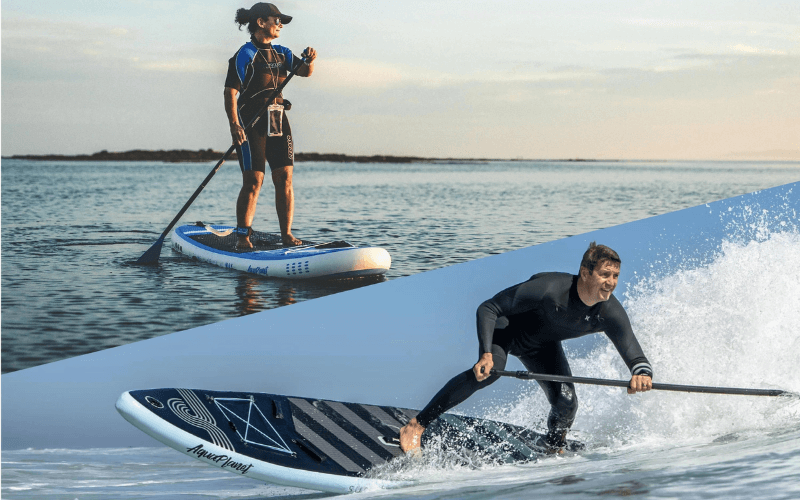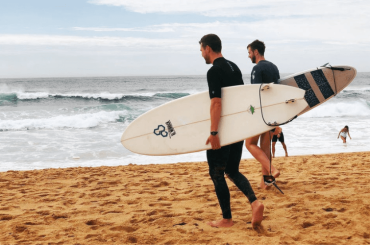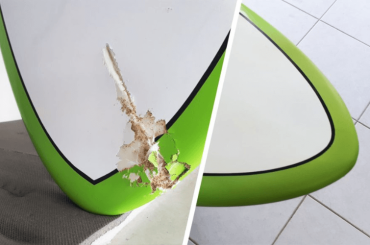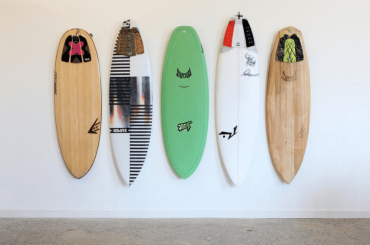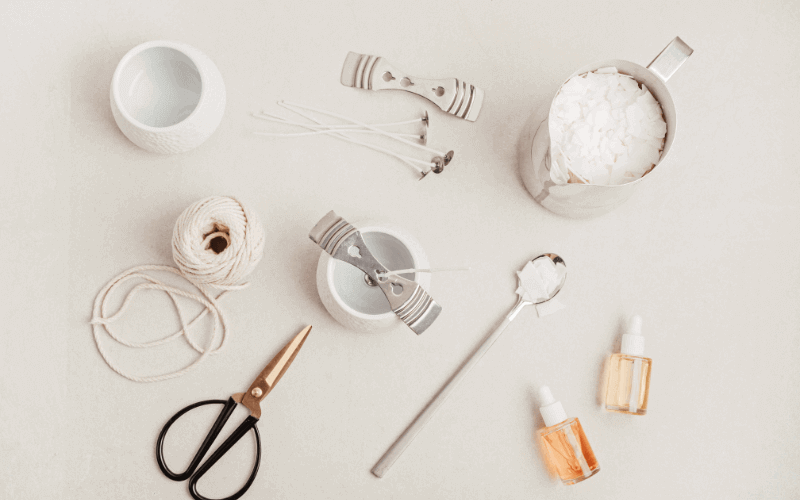The Surfboard and the Paddleboard are both popular water sports equipment, but what is the difference between the two?
A Surfboard is used to ride waves, while a paddle board can be used for various activities such as riding waves, SUP racing, fishing and yoga. The Surfboard has been around for much longer than the paddleboard and typically costs more.
In this blog post, we will explore the differences between these two water sports enthusiasts’ favorites – surfboards and paddle boards. We will take a look at the history of each, what is necessary to participate in either sport, as well as some pros and cons of each. So, if you’re curious about which is better for you – a surfboard or a paddle board.
What is the Surfboard and what is the Paddleboard?
A surfboard is a small, narrow board used for riding waves. It is also known as a “surfing board” or a “wave board”. Surfboards are made of different materials, including wood, fiberglass and foam. They come in different sizes and shapes, depending on the type of wave they are meant to ride.
A paddleboard is a large, flat board used for stand-up paddle boarding. Paddleboards are made of different materials, including fiberglass and plastic.
They come in different sizes and shapes, depending on the type of water they will be used in. Paddle Boards can be used in both calm and rough glasses of water.
How do you ride a surfboard and how do you ride a paddleboard?
Riding a surfboard is pretty simple – you just need to know how to paddle and then pop up on the board. Paddle boarding is a bit more difficult, as you need to maintain your balance while paddling. But once you get the hang of it, it’s really fun!
Here are some tips on how to ride a surfboard and paddleboard.
- When paddling out to catch a wave on a surfboard, be sure to keep your arms parallel to the water.
- This will help you maintain balance and avoid getting thrown off of your board. Once you see a wave coming, start paddling with all your might! As you get closer to the wave, begin to pop up onto your board.
- When popping up, be sure to place your hands on the board in front of you and then jump up quickly so that you’re standing on the board.
- If you do it too slowly, you’ll likely fall off the board. Once you’re standing, keep your feet shoulder-width apart and begin riding the wave!
Riding a paddleboard is similar to riding a surfboard, but there are a few key differences.
- For one, you will be standing upright on the paddleboard, so it is important to maintain your balance.
- Second, instead of paddling with your arms parallel to the water, you will want to keep them at your sides so that you can paddle evenly.
- When you see a wave coming, start paddling quickly with both arms to build up speed. As you get closer to the wave, begin to pop up onto your board.
- When popping up, be sure to place your hands on the board in front of you and then jump up quickly so that you’re standing on the board.
- Once you’re standing, keep your feet shoulder-width apart and begin riding the wave. I hope these tips help you next time you’re out surfing or paddle boarding.
What are the benefits of surfing over paddle boarding?
There are many benefits to surfing over paddle boarding. Surfing is a great way to enjoy the waves and the water, while paddle boarding is a great way to get some exercise. However, there are some key differences between these two activities.
Here are some of the benefits of surfing over paddle boarding:
- Surfing requires more upper-body strength than paddle boarding, so it is a great workout for your arms and shoulders.
- Surfing is more challenging than paddle boarding, so it can be more rewarding when you catch a great wave.
- Surfing is a more extreme sport than paddle boarding, so it can give you an adrenaline rush that you might not get from paddle boarding.
- Surfing can be more dangerous than paddle boarding, so it is important to be aware of your surroundings and always wear a life jacket.
Overall, surfing is a great way to enjoy the waves and the water, while paddle boarding is a great way to get some exercise. However, there are some key differences between these two activities. Choose the one that is right for you and enjoy!
What are the costs associated with purchasing each type of board?
There is no one-size-fits-all answer to this question, as the cost of boards will vary depending on the type of board, the size of the board and the quality of the materials used.
Generally speaking, however, a good quality wooden cutting board can cost anywhere from $20 to $100. Cutting boards made from plastic or composite materials may be less expensive, but they may also need to be replaced more frequently. Ultimately, the best cutting board for your kitchen is the one that fits your budget and meets your needs.
When it comes to cost, the two main types of boards are wooden boards and plastic or composite boards. Wooden boards tend to be more expensive than plastic or composite boards, but they also last longer. If you’re looking for a cutting board that will last for many years, a wooden board is a good investment. However, if you’re on a budget, a plastic or composite board may be a better option.
Purchasing a snowboard
The cost of purchasing a snowboard depends on the type of board, the brand, the retailer and other factors. Generally speaking, entry-level boards tend to be less expensive than high-end boards. For example, an entry-level all-mountain board from a major brand like Burton might cost around $400, while a high-end all-mountain board from the same brand could cost upwards of $800.
When purchasing a used snowboard, it is important to inspect the board carefully for any damage. It is also a good idea to ask the seller about the history of the board and how it has been used. Used snowboards can be a great way to save money, but it is important to make sure that you are getting a quality board.
The cost of lift tickets varies depending on the resort, the time of year and other factors. Lift tickets can be purchased in advance online or at the resort. Generally speaking, lift tickets are cheaper when purchased in advance. For example, a lift ticket for Vail during the peak season might cost around $200, while the same ticket purchased seven days in advance could cost around $100.
Cost of ski
The cost of ski and snowboard equipment depends on the brand, the type of equipment and other factors. Generally speaking, high-end equipment tends to be more expensive than entry-level equipment. For example, a high-end ski from a major brand could cost upwards of $1,000, while the same ski from an entry-level brand could cost around $500.
When purchasing ski or snowboard equipment, it is essential to consider your budget and the type of equipment you need. If you are a beginner, it is a good idea to start with entry-level gear. If you are an experienced rider, you might want to consider high-end equipment.
Relevant Topic: Difference Between Skimboard And Surfboard
FAQs – Surfboard Vs Paddleboard
Can you use a paddleboard as a surfboard?
Yes, paddle boards can be used as surfboards. Paddle boards are often longer and wider than traditional surfboards, which makes them more stable. Additionally, paddle boards typically have a foam deck, which makes them more comfortable to ride.
Is it easier to surf or paddleboard?
This is a difficult question, as it depends on the individual. Some people find surfing to be easier, while others find paddle boarding to be easier. Ultimately, it is up to the individual to decide which activity they prefer.
What’s the difference between SUP and paddle boarding?
SUP is an acronym for stand-up paddle boarding. Stand-up paddle boarding is a type of paddle boarding where the rider stands on the board and uses a paddle to propel themselves through the water. Paddleboarding, on the other hand, can be performed in either a standing or sitting position.
Can I learn to surf on a stand-up paddleboard?
Yes, you can learn to surf on a stand-up paddleboard. Stand-up paddleboards are often longer and wider than traditional surfboards, which makes them more stable.
Additionally, stand-up paddle boards typically have a foam deck, which makes them more comfortable to ride.
How much does it cost to buy a stand-up paddleboard?
The cost of a stand-up paddleboard depends on the brand, the type of board and other factors. Generally speaking, entry-level boards tend to be less expensive than high-end boards.
For example, an entry-level all-purpose board from a major brand like BIC could cost around $500, while a high-end all-purpose board from the same brand could cost upwards of $1,000.
What size SUP should I get for surfing?
When choosing a SUP for surfing, it is important to consider the size of the waves you will be riding. If you are going to be riding small waves, you will need a smaller board. If you are going to be riding big waves, you will need a bigger board.
Additionally, it is important to consider your height and weight when choosing a SUP. Generally speaking, taller and heavier riders will need a bigger board, while shorter and lighter riders will need a smaller board.
Conclusion:
Surfboards and paddleboards are both great for getting out on the water, but they each have their unique benefits. Surfboards and paddleboards may look similar but they are designed for different activities.
If you’re looking for a board to ride the waves, go with a surfboard. If you want to use your board as a means of transportation or for fitness, choose a paddle board.

